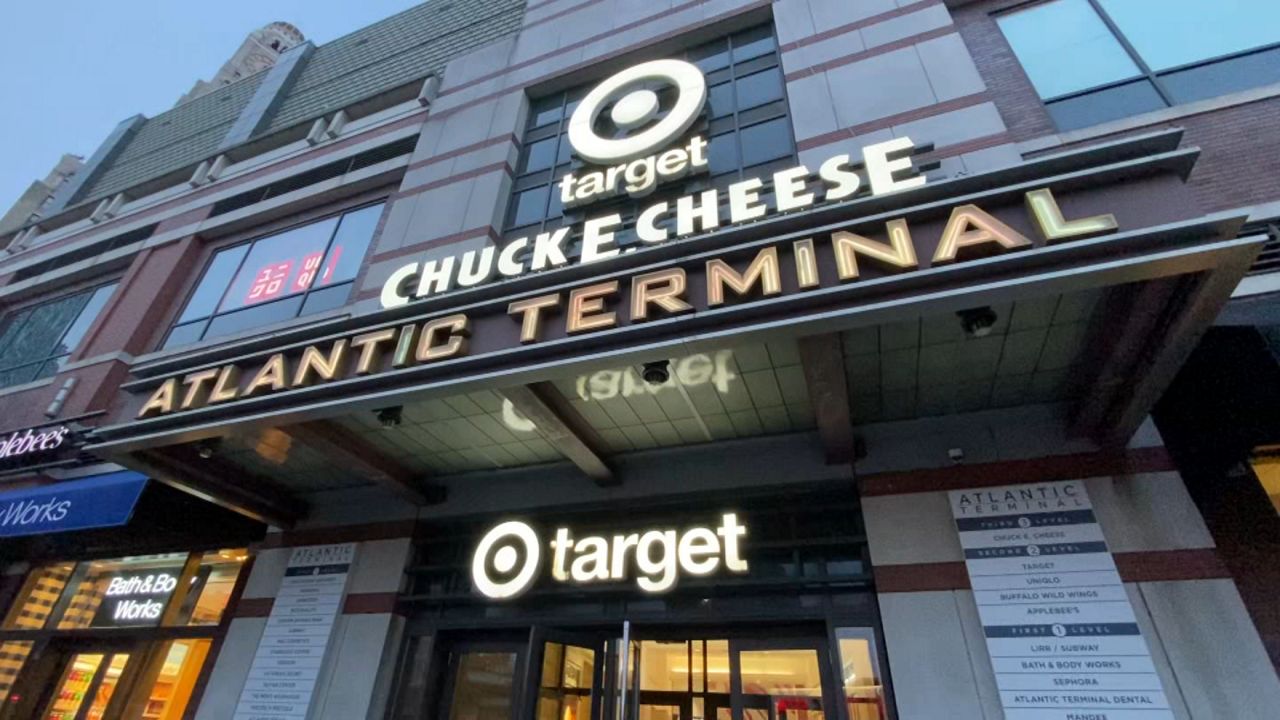A new report by City Harvest finds one in four children in New York City are experiencing food insecurity — a trend that continues to worsen since the COVID-19 pandemic.
What You Need To Know
- Last year, families made more than 1 million average monthly visits to food pantries in the city, according to a report by City Harvest
- The report shows a nearly 100% increase in visits to pantries by families with children, compared to before the COVID-19 pandemic
- Community Food Connection, which supplies high quality food to charities and food banks, could have its funding slashed by $30 million as part of Mayor Eric Adams’ preliminary executive budget for next year
Courtney Fields is among 1.2 million New Yorkers who don’t have enough to eat and don’t know where their next meal will come from.
She said her nearest food pantry is a lifeline for herself and her five young children.
“It’s serious at the end of the month for single moms and I don’t know what I would do if the pantry wasn’t here. Honestly, I don’t,” Fields said.
Every week, the single mother walks one mile from her homeless shelter to the Bed-Stuy Campaign Against Hunger.
She said without this food pantry, her family would not survive.
“I’ll probably have to resort to things that I don’t want to resort to. Some people don’t have fathers for extra help. I don’t even have a father. I lost all the support. So it’s just me. I don’t know what I would do,” Fields said.
According to a new report by City Harvest, one in four children doesn’t have enough food to meet their nutritional needs. Last year, families made more than 1 million average monthly visits to food pantries in the city.
Data also shows a nearly 100% increase in visits to pantries by families with children compared to before the COVID-19 pandemic.
Jerome Nathaniel, who is the director of Policy and Government Relations for City Harvest, which published the child hunger report, said resources for low-income families have dwindled in the years following the pandemic.
“During COVID, there were a number of critical government programs and new food access programs that were put in place to support families and unfortunately, many of those programs have shored up or they’ve been allowed to sunset, leaving children without that support,” Nathaniel said.
Advocates for the hungry say the city should continue to invest in programs like Community Food Connection, or CFC, which supplies high-quality food to charities and food banks.
But Mayor Eric Adams’ preliminary executive budget for next year includes $30 million in cuts to that program.
“If Community Food Connection is cut, then chances are, we will have to cut from every end because they’re the ones supporting all our programs. We’re serving over 14,000 per week,” Melony Samuels, the CEO and founder of The Campaign Against Hunger, which has 250 locations across the five boroughs, said.
In a statement, a spokesperson for City Hall said, “The Adams administration continues to combat food insecurity in our city… We will continue to closely monitor ongoing needs through the budget process while simultaneously working with our city partners and key stakeholders to delivery for New Yorkers in need.”
Meanwhile, Fields hopes programs like The Campaign Against Hunger will continue to operate so she and her children can have a fighting chance.
“They’re gonna go hungry. So they need places like this so they can eat if someone like me doesn’t have support to feed the kids. We rely on places like this to feed the kids,” Fields said.
Adams still needs to negotiate a final budget with the City Council before the July 1 deadline.




_PKG_Bk_Child_Hunger_Report_CG?wid=320&hei=180&$wide-bg$)


_PKG_Atlantic_Avenue_Rezoning_131543395_1837)
